I'm not sure there is a "current version" of the MA-5002VZ. The 5002 was just the latest. The modern "Macrotechs" are a class D variant. I'm not sure there is a clear winner, but I happen to have the CA18's, they're paid for, and they drive the subs well enough not to complain. The VZ's really do sound good, and modern amps in the same class are better in a number of respects. But I'm in no position to "modernize" and dump everything for a rack or two full of $6000 lightweight class D replacements since my PA work is hobby and not really income-generating.
Flame Linears really were the be all and end all amp - when you couldn't afford the CS800's or BGW750's. I keep two of them, but I'm still using my CS800/BGW clone (using the best of both circuits) for running my Scan-Speaks in the living room. Wife still complains about the fan.... which would be an issue with either the 5002 or CA18.
Flame Linears really were the be all and end all amp - when you couldn't afford the CS800's or BGW750's. I keep two of them, but I'm still using my CS800/BGW clone (using the best of both circuits) for running my Scan-Speaks in the living room. Wife still complains about the fan.... which would be an issue with either the 5002 or CA18.
Thanks again for the info. My experience with old Peavey equipment found them to be noisy (hiss). Could just have been abused equipment. I had many BGW 750's pass through my hands, nice modular design, used for Sensurround in the 70's. I think the Power supply rails were less than the + and - 100 volt that PL 700 B's use. The PL transformer was definitely bigger.
I have a QSC rmx 2450, the fan noise was a issue when I used it while repairing one of my Phase Linears. I considered installing a resistor in series with the fan, that I could bypass when I wanted to "let loose". (I have manual switches for external fans for the PL's) I did not want to drill holes in the amp for this mod, and in any case, the subs are calling for a 1000 wpc + amp.
When you say 'light weight', the crown still weighs 77 pounds. QSC has a line of amps in the 20 to 30 pound range. Are these transformerless? In the 80's, there were theatre powered subs using the AC line as B+ and B-. Opto-isolators on the input.
I want no part of that for my home theatre system, Ground loop problems and speaker outputs tied to the AC line.
Would you not use one of your CA18's to drive full range speakers in your living room? (apart from fan noise).
Thanks again for your time, Peter
I have a QSC rmx 2450, the fan noise was a issue when I used it while repairing one of my Phase Linears. I considered installing a resistor in series with the fan, that I could bypass when I wanted to "let loose". (I have manual switches for external fans for the PL's) I did not want to drill holes in the amp for this mod, and in any case, the subs are calling for a 1000 wpc + amp.
When you say 'light weight', the crown still weighs 77 pounds. QSC has a line of amps in the 20 to 30 pound range. Are these transformerless? In the 80's, there were theatre powered subs using the AC line as B+ and B-. Opto-isolators on the input.
I want no part of that for my home theatre system, Ground loop problems and speaker outputs tied to the AC line.
Would you not use one of your CA18's to drive full range speakers in your living room? (apart from fan noise).
Thanks again for your time, Peter
The old MA5000VZs are 77 pound iron horses, the modern "Macrotech-I" are BCA (class D) with switching supplies. $1k used and heavy vs. $6k new and light. If diesel fuel and labor aren't isses, do the math  . QSC's lightweights use switching supplies, but are class H.
. QSC's lightweights use switching supplies, but are class H.
I wouldn't use one of my CA18's in my living room because I don't want to go unhooking it when I need it for a gig. And my homebrew concoction is sufficient at 440W/ch. It will occasionally bottom the 8565's, and has blown a few ribbon elements. 1600W might be a bit much.
I wouldn't use one of my CA18's in my living room because I don't want to go unhooking it when I need it for a gig. And my homebrew concoction is sufficient at 440W/ch. It will occasionally bottom the 8565's, and has blown a few ribbon elements. 1600W might be a bit much.
technics sa-ax710 receiver with class-H
Just for info....
When i repaired an old technics sa-ax710 receiver i discover it has class-H configuration.
Didn't expect this in a consumer product.
It has +/- 25v and +/-45 volt supplies and uses 2 different panasonic ampl modules together.
The amp sounds good, better them my marantz sr4600 i had the impression .
.
Just for info....
When i repaired an old technics sa-ax710 receiver i discover it has class-H configuration.
Didn't expect this in a consumer product.
It has +/- 25v and +/-45 volt supplies and uses 2 different panasonic ampl modules together.
The amp sounds good, better them my marantz sr4600 i had the impression
Threadjack!
I think this thread deserves a bump.
After glancing at Labgruppen and Yamaha eengine I'm eager to make something like that, i.e. adding a tracking downconverter or whatever this thing should be called.
Going Labgruppen way with a clocked PWM running at over 500kHz looks overkill for a DIY prototype, surely Yamaha'sEengine looks more attractive. However looking at Yamaha's EEngine downconverter cell I wonder: why do Yamaha's engineers use relatively slow and pricey BJT's in the current amplifier (downconverter 'G'-class part that powers output stage during high speed transients when the buck converter can't keep up with OP stage needs) and run it at pretty high Vce?
I think it's easy to make the downconverter cell more robust and even cheaper by replacing BJTS with MOSFET + BJT cascode combo this way (it's possible to use lower voltage BJT at much lower Vce to aid with SOA and use a mosfet that's don't suffer from second order breakdown plus is much faster) or just a MOSFET.
I'm attaching pics to illustrate what I'm about.
Any thoughts?
P.S. Can someone name other makes/amp names that use downconverter cells to supply OP with available schematcs on the Net which are worth to study?
I think this thread deserves a bump.
After glancing at Labgruppen and Yamaha eengine I'm eager to make something like that, i.e. adding a tracking downconverter or whatever this thing should be called.
Going Labgruppen way with a clocked PWM running at over 500kHz looks overkill for a DIY prototype, surely Yamaha'sEengine looks more attractive. However looking at Yamaha's EEngine downconverter cell I wonder: why do Yamaha's engineers use relatively slow and pricey BJT's in the current amplifier (downconverter 'G'-class part that powers output stage during high speed transients when the buck converter can't keep up with OP stage needs) and run it at pretty high Vce?
I think it's easy to make the downconverter cell more robust and even cheaper by replacing BJTS with MOSFET + BJT cascode combo this way (it's possible to use lower voltage BJT at much lower Vce to aid with SOA and use a mosfet that's don't suffer from second order breakdown plus is much faster) or just a MOSFET.
I'm attaching pics to illustrate what I'm about.
Any thoughts?
P.S. Can someone name other makes/amp names that use downconverter cells to supply OP with available schematcs on the Net which are worth to study?
Attachments
Last edited:
HD CLASS T5N
My diy efforts YAMAHA HD CLASS T5N with input signal limiter and overcurrent
protection want to diy labgruppen TD class
My diy efforts YAMAHA HD CLASS T5N with input signal limiter and overcurrent
protection want to diy labgruppen TD class
Attachments
My diy efforts YAMAHA HD CLASS T5N with input signal limiter and overcurrent protection

What stops you from doing that? There are schematics for FP series amps on the Internet and even pics of the board to aid with layout.want to diy labgruppen TD class
Hey guys. Can you do me some favor? Can I ask for a schematic and a foil pattern of your power amp. Any high power amp for outdoor pls.... thanks
 have all the fun
have all the fun http://www.diyaudio.com/forums/solid-state/162408-900w-h-class-pa-amp-limiter.html

I think this thread deserves a bump.
After glancing at Labgruppen and Yamaha eengine I'm eager to make something like that, i.e. adding a tracking downconverter or whatever this thing should be called.
Going Labgruppen way with a clocked PWM running at over 500kHz looks overkill for a DIY prototype, surely Yamaha'sEengine looks more attractive. However looking at Yamaha's EEngine downconverter cell I wonder: why do Yamaha's engineers use relatively slow and pricey BJT's in the current amplifier (downconverter 'G'-class part that powers output stage during high speed transients when the buck converter can't keep up with OP stage needs) and run it at pretty high Vce?
I think it's easy to make the downconverter cell more robust and even cheaper by replacing BJTS with MOSFET + BJT cascode combo this way (it's possible to use lower voltage BJT at much lower Vce to aid with SOA and use a mosfet that's don't suffer from second order breakdown plus is much faster) or just a MOSFET.
I'm attaching pics to illustrate what I'm about.
Any thoughts?
P.S. Can someone name other makes/amp names that use downconverter cells to supply OP with available schematcs on the Net which are worth to study?
any luck or updates ??diysmps
diysmps
Hi workhorse , is this your site and have you posted your class h amp here? Kindly share amp linkMods, if possible kindly delete some off topic posts
http://www.workhorseaudio.com/
Hi Stewin,Hi workhorse , is this your site and have you posted your class h amp here? Kindly share amp link
http://www.workhorseaudio.com/
Its kASD now not workhorse.
The website is not mine, nor I am related to it
oops sorry , my bad .but thanks for sharing your great amp kasd , by the way do you have a three tier version of your amp ? or what can be done to your amp to make it a 3tier?Hi Stewin,
Its kASD now not workhorse.
The website is not mine, nor I am related to it
the reason for my question is cause you provided a lot of good data for the 1500h kasd amp , https://www.diyaudio.com/community/threads/workhorse-1500w-bipolar-class-h.181257/post-2435248 and i was curios to make a three tier one.
Sorry for taking you back , but just curious why you designed class h 3tier with all complexity instead of just designing a class d with two output fets and using +/-160vlts power supply, ???Class-H is much efficient than Class-AB, but don't compare it with Class-D which is totally different thing.
Having made Class-AB/H/G/D, Class-D gave me highest of efficiency and reduced Heatsink size.
- Home
- Amplifiers
- Solid State
- The Class - H Amplifier
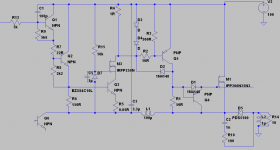
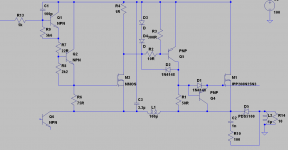
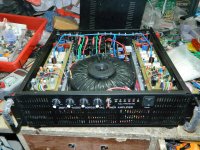
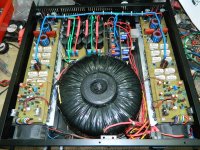
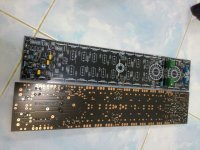
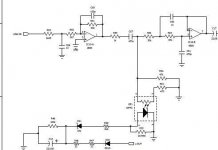
 Please begin a new thread. You will have better exposure and this thread will remain as it was.
Please begin a new thread. You will have better exposure and this thread will remain as it was.